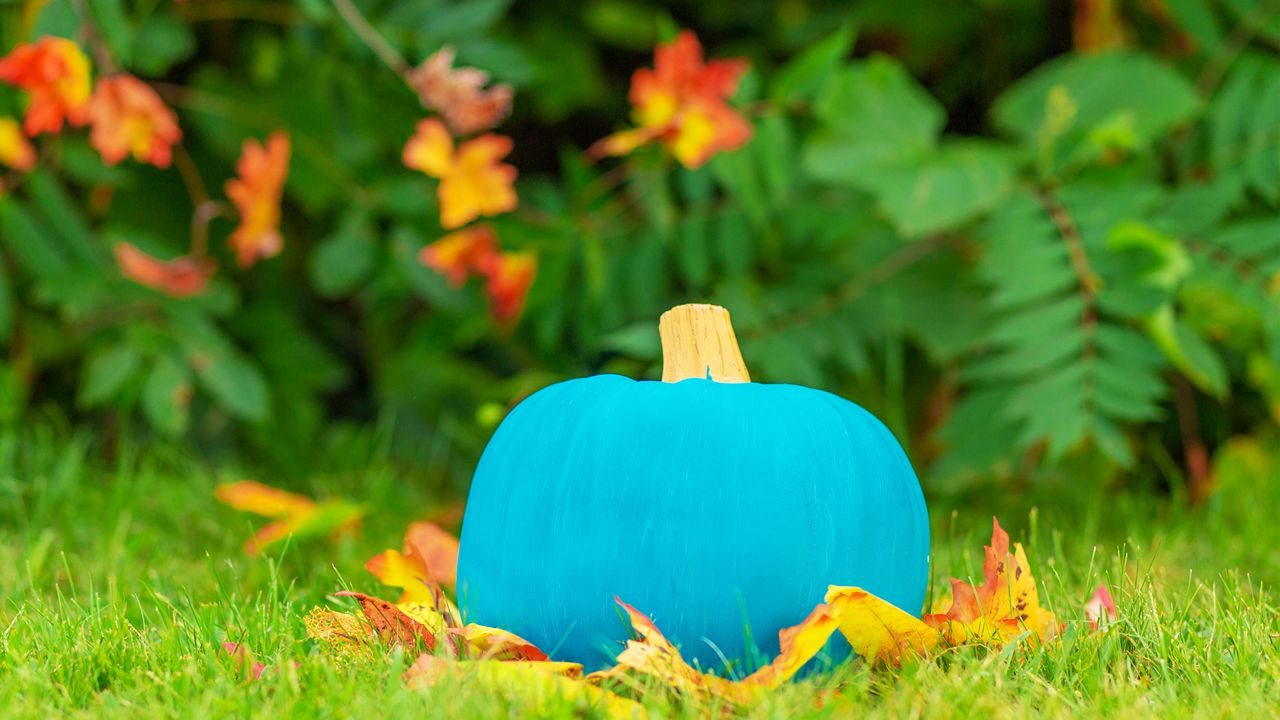ST. PETERSBURG, Fla. — On Halloween night, trick-or-treaters may see some pumpkins of a different color in front of Sara-Ellen Burnett’s home in Historic Kenwood.
For several years now, Burnett, who runs local concierge food and catering service The Lay Low Chateau Hospitality with her husband, has been putting out colorful pumpkins to show the family’s support for health-related causes.
What You Need To Know
- Several different colors of pumpkin are used on Halloween to support various causes
- Most colored pumpkins signal awareness of health issues
- Kids with food allergy issues, for instance, should look for a teal pumpkin to get appropriate treats
“We try to do it every year,” she says. “Helping to raise awareness is always good.”
Burnett’s ten-year-old niece suffers from an extremely rare cerebrovascular condition known as Gould Syndrome, and experienced epileptic seizures as a result. Burnett learned that her sister was displaying a purple pumpkin in solidarity with other such families, and followed suit; she says it not only indicates support, but also lets the parents of epileptic children know there’s nothing about the Burnetts’ Halloween display that might trigger seizures.
“It’s just kind of sensory awareness,” she says. “We have candles and things outside but we don’t have flashing lights or anything like that, so little kids can come and feel a little bit safer.”
Not long after, she heard that blue pumpkins and treat totes telegraphed autism, and began showcasing an appropriately hued pumpkin. A teal pumpkin, which lets the parents of trick-or-treaters with food allergies or dietary restrictions know that a house is offering alternatives to candy or food in general, eventually made an appearance as well.
“We have friends whose kids have allergies, so we knew we were going to have kids specifically coming to our house that had a lot of food allergies,” says Burnett. “So we figured we’d just open it up to the neighborhood.
“[We give out] little trinkets, bubbles, little puzzles. We’re trying to stay away from stuffed animals because of other potential allergies there. Colored pencils, funky little things like that. The kids are usually pretty happy about it.”
Thanks to videos on social media and pushes from various nonprofit health-advocacy organizations, colored pumpkins like these are showing up on more and more Halloween doorsteps nationwide. Savvy growers have figured out how to breed the season’s signature gourd in a variety of shades, but plenty of All Hallow’s Eve celebrants have taken to painting their own, too.
Here’s a list of some of the most prominent “support pumpkins,” and what they mean.
TEAL PUMPKINS
Teal pumpkins in front of homes on Halloween mean that particular stop on the trick-or-treat tour is giving away treats of the non-edible variety, in deference to any potential food allergies or dietary restrictions. Small toys, glow sticks or festive light-up wearables are just some of the trinkets kids can collect at these houses. If your home is going teal this year, you will soon be able to add your location to the Teal Pumpkin Project’s interactive Halloween map.
PURPLE PUMPKINS
The Epilepsy Foundation aims to encourage support for afflicted youngsters through its Purple Pumpkin Project. Those that display purple pumpkins often have family members that suffer from epilepsy, while others simply want trick-or-treating parents to know that their Halloween displays are safe for epileptics — no strobe lights, etc.
BLUE PUMPKINS
While a few online commenters and older articles claim a blue pumpkin indicates that a home is giving away alternatives to sugary treats, most agree that it’s in recognition of autism, and that teal pumpkins are the way to go in that regard. The blue pumpkin-autism connection began with an online movement encouraging children on the spectrum to carry blue treat totes. Some have also taken to displaying blue pumpkins in support of police officers.
PINK PUMPKINS
The color pink is most commonly associated with breast cancer associations and organizations. If you see a pink pumpkin on a front porch while trick-or-treating, there’s a good chance it’s there in support of the victims of and families affected by the disease.



